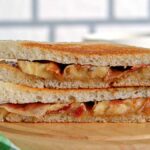Imagine a world of delectable desserts, free from the constraints of common allergens like dairy, gluten, nuts, and soy. A world where sweet treats are effortlessly created, requiring no oven and minimal time. This is the realm of no-bake, allergen-free desserts—a culinary haven where deliciousness meets dietary needs. Prepare to embark on a journey of vibrant flavors and textures, where creamy mousses yield to rich chocolate ganaches, and fruity parfaits dance on the tongue. Each bite is a testament to the simple elegance of these quick and easy recipes, perfectly designed for those seeking both indulgence and mindful eating.
This guide unveils a collection of five unique no-bake dessert recipes, meticulously crafted to be both allergen-friendly and remarkably simple to prepare. We’ll delve into ingredient substitutions, providing you with the knowledge to adapt recipes to your specific dietary requirements. Step-by-step instructions, complete with vivid descriptions of the transformation of ingredients, will guide you through the creation of these delightful treats. We’ll also explore creative presentation ideas, ensuring your desserts are as visually appealing as they are delicious. Finally, we’ll address additional dietary considerations and offer practical tips for safe handling and storage.
Ingredient Substitutions

Adapting no-bake allergen-free dessert recipes often requires thoughtful ingredient substitutions. Successfully navigating these substitutions hinges on understanding how each ingredient contributes to the final product’s texture and taste. Careful consideration will ensure your allergen-free dessert remains delicious and enjoyable.
Dairy-Free Milk Alternatives
Many no-bake desserts rely on dairy for creaminess and richness. Replacing dairy milk with plant-based alternatives like almond milk, coconut milk, or oat milk can significantly impact the final texture. For instance, using full-fat coconut milk in a chocolate mousse recipe will yield a richer, denser mousse than using almond milk, which might result in a lighter, slightly less decadent texture. The taste will also vary; coconut milk will impart a distinct coconut flavor, while almond milk will have a milder, subtly nutty taste. Chilling times might need slight adjustments depending on the thickness of the chosen milk alternative; thicker milks may require slightly longer chilling for optimal setting. Thinner milks may need the addition of a thickening agent like agar-agar or arrowroot powder to achieve the desired consistency.
Gluten-Free Flour Blends
Gluten-free baking often involves substituting wheat flour with a blend of gluten-free flours like almond flour, rice flour, or tapioca starch. These substitutions impact the texture of no-bake desserts that incorporate flour as a thickening agent or for structure. For example, a recipe calling for flour to thicken a pie filling might require a higher proportion of gluten-free flour blend compared to wheat flour. Almond flour, in particular, can absorb more liquid, potentially requiring adjustments to the recipe’s liquid content. The taste will also differ; almond flour adds a subtle nutty flavor, while rice flour contributes a milder, almost neutral taste. Chilling times are usually not significantly affected by gluten-free flour substitutions, as the primary role of the flour in no-bake desserts is typically thickening rather than creating a baked structure.
Sugar Substitutes
Many individuals seek to reduce refined sugar in their diets, necessitating sugar substitutes in allergen-free recipes. Replacing granulated sugar with alternatives like maple syrup, agave nectar, or stevia can influence both the sweetness and texture. Maple syrup, for example, adds a distinct caramel-like flavor and a slightly thicker consistency compared to granulated sugar. This might require reducing the amount of liquid in the recipe to compensate for the increased viscosity. Stevia, being significantly sweeter than sugar, needs to be used sparingly to avoid an overly sweet dessert. Chilling times remain largely unaffected by these substitutions, unless the altered viscosity significantly changes the dessert’s overall consistency. For example, a mousse made with maple syrup might set slightly faster due to its thicker consistency.
Step-by-Step Guide: Allergen-Free Chocolate Avocado Mousse
This recipe details the creation of a rich, decadent chocolate avocado mousse, completely free of common allergens like dairy, nuts, and gluten. The vibrant green of the avocado transforms into a smooth, dark brown confection, showcasing the surprising versatility of this fruit. Each step is designed for ease and precision, resulting in a delightful dessert perfect for any occasion.
Preparing the Avocado Base
This initial phase focuses on creating a creamy, smooth base for our mousse. The texture transition from chunky avocado to a velvety puree is key to the final product’s success.
- First, scoop the flesh of one ripe avocado into a medium-sized bowl. The avocado should be a deep, vibrant green, almost buttery in appearance. Its texture should be soft and yielding to the touch.
- Next, add 2 tablespoons of unsweetened cocoa powder. The cocoa powder, a rich dark brown, will immediately begin to darken the bright green of the avocado. Gently stir to combine the two ingredients, noticing how the color shifts towards a deep olive green.
- Now, incorporate 2 tablespoons of maple syrup. The addition of this golden-brown liquid will enhance the overall richness and subtly sweeten the mixture. Stir until a smooth, homogenous paste forms, the color deepening slightly to a dark, muddy green.
- Finally, add a splash of vanilla extract (approximately 1 teaspoon). The addition of the vanilla, while colorless, will dramatically enhance the aroma, lending a sweet, comforting fragrance to the mixture. Stir until fully incorporated. The mixture should now have a dark, almost chocolatey green hue and a smooth, creamy consistency.
Assembling and Chilling the Mousse
This section focuses on the final steps, including the addition of the remaining ingredients and the crucial chilling period that allows the flavors to meld and the mousse to set.
- Pour the avocado mixture into two small serving glasses or ramekins. The dark, smooth mixture will settle evenly in the glass, displaying its creamy texture. The color should be a consistent, dark olive-green throughout.
- Chill the mousse in the refrigerator for at least 2 hours, or preferably overnight. During this chilling period, the mousse will firm up considerably. The color will remain largely unchanged, but the texture will transform from a soft puree to a firm, mousse-like consistency.
Creating delicious and allergen-free desserts doesn’t have to be a daunting task. With the right knowledge and a touch of creativity, you can craft beautiful, satisfying treats that cater to various dietary needs. This guide has equipped you with the recipes, substitutions, and techniques to confidently navigate the world of no-bake, allergen-free baking. From the vibrant colors and smooth textures to the delightful aromas filling your kitchen, the process of creating these desserts is as rewarding as the final product. So, gather your ingredients, unleash your inner chef, and savor the sweet rewards of your culinary endeavors. Enjoy the delightful simplicity and boundless possibilities of no-bake, allergen-free desserts!
Expert Answers
Can I freeze these no-bake desserts?
Yes, many no-bake desserts freeze well. Check individual recipes for specific freezing instructions, as some ingredients may not freeze as well as others. Generally, freezing in airtight containers is recommended.
How long will these desserts last in the refrigerator?
Most no-bake desserts will last 3-5 days in the refrigerator when stored properly in an airtight container. However, always check for any signs of spoilage before consuming.
What if I don’t have a specific ingredient listed in a recipe?
The guide provides suggestions for ingredient substitutions. If you’re unsure about a replacement, research alternatives online or consult a reliable culinary resource. Always prioritize ingredients that align with your dietary needs.
Are these desserts suitable for children with allergies?
Yes, but always double-check ingredient labels to ensure they align perfectly with the child’s specific allergies. Exercise caution to prevent cross-contamination during preparation.


